The liberation of Odessa - the usual brilliant victory
This battle is not well known in the military. stories. It is rarely mentioned in the memoirs of generals, and even in fundamental research of the Great Patriotic War does not take up too much space. This is not surprising: compared to the grand battles like the Moscow, Stalingrad or Kursk, Odessa offensive operation fades a little.
However, for us, the residents of Odessa, this operation has an independent meaning. In addition, it perfectly illustrates the peculiarities of the Soviet army of that period and convincingly refutes many of the myths that are diligently created around the Great Patriotic War by individual writers and journalists.
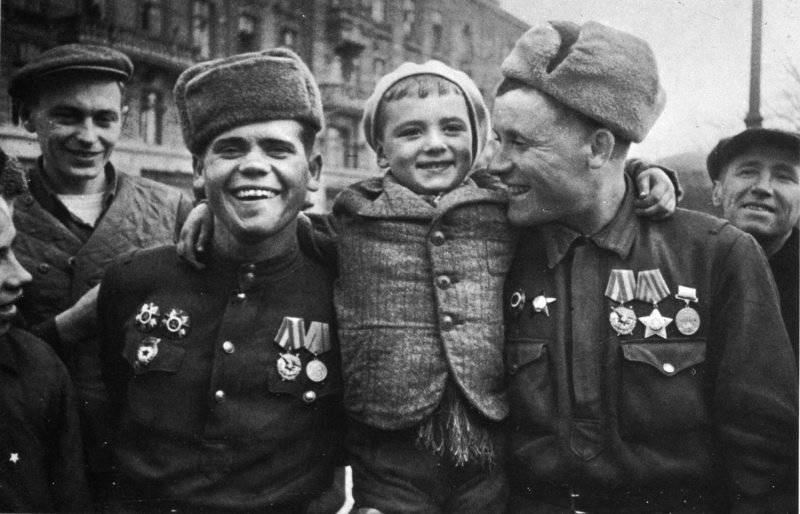
And it was so.
By March 1944, the line of the Soviet-German front in its southernmost section ran along the Southern Bug River. At the same time on the eastern bank of the river the Germans still held the city of Nikolaev. The defense — and after the Battle of Kursk — nothing else could have done anything for the Germans — the troops of the German Army Group A were held there as part of the 6 and 17 of the German and 3 Romanian armies. 3, 57, 37, 46, Guards, 8 and 6 armies, as well as the cavalry-mechanized group consisting of 5 Guards Mechanized Corps and 28 Guards Cavalry Corps.
A simple listing of the number of formations gives the impression of a crushing numerical superiority of the Soviet troops: seven armies and one military group against three armies. But the fact is that Soviet units, as a rule, had a smaller number than similar German formations.
By the way, this nuance is often used in German memoirs by German generals (Erich von Manstein especially likes to use this criterion) in order to justify the defeats inflicted on them by Soviet commanders. And domestic publicists after them like to talk about the fact that the Germans were simply crushed by the numbers, throwing thousands of unarmed and poorly trained people on German machine guns without counting Tanks...
In practice, however, everything was a little different. In humans, Soviet troops outnumbered the Germans only 1,3 times: the advantage was not very significant for an offensive operation, in the framework of which the forcing of a major river and the liberation of two large cities were to be.
The superiority of the Soviet side in tanks and artillery was much more convincing: our troops had 2,7 times more tanks and self-propelled guns than the enemy, and we were stronger than 4 times in artillery.
So the Soviet soldiers were not at all thrown into battle in the hope of overwhelming the Germans with corpses - on the contrary, the Soviet troops went into battle, possessing a much greater degree of saturation with military equipment than the one the Germans could boast.
Planning the operation, the Soviet command had set in advance the task of not just liberating the region from the Southern Bug to the Dniester and driving the enemy out of the old border of the USSR. It was about the intention to cut off and destroy enemy forces stationed here. They planned to achieve this by using the tactics of a deep breakthrough of mobile connections with the dissection of the enemy's defensive grouping, interception of its communications and the subsequent environment, that is, using the most progressive tactics of that time.
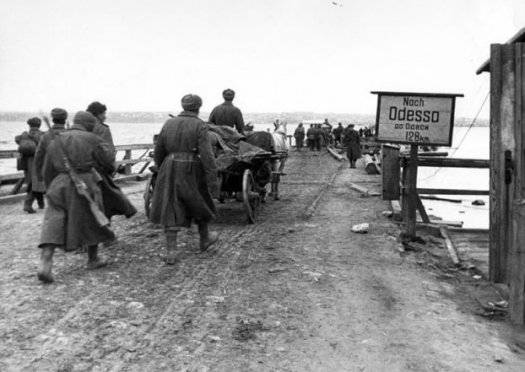
At the initial stage of the operation, the Soviet army was to accomplish the forcing of the Southern Bug and the liberation of the city of Nikolayev located in its lower course.
The breakthrough of the German defense began in three places at once: in the north, near Voznesensk, in the center, near New Odessa, and in the south as part of the operation to liberate Nikolayev. At the same time, in order to facilitate the actions of the troops in this area, it was decided to conduct an operation on disembarking a naval landing in Nikolaev.
By the way, amphibious landings with limited objectives were also a characteristic tactical tool used mainly by the Soviet Union. Thus, the Anglo-American troops used landings only as the initial stage of large-scale operations in which new theaters arose: during the landing in North Africa, Sicily, in Italy, and finally in Normandy. At the same time, the Soviet troops used private landings for private purposes as a tactical tool: to disorient the enemy, to control the troops, to create confusion and panic.
So, it was decided to land a limited landing party in the port of Nikolaev. The commander of the landing was appointed senior lieutenant Konstantin Olshansky. The landing was supposed to be carried out in two waves: the first was to go 55 Marines and 12 army sappers.
The marines of Olshansky imperceptibly penetrated the territory of the port, silently removed the guards and occupied the all-round defense. A three-day epic of the olshantsev paratroopers began, which is one of the most prominent examples of the heroism of Soviet soldiers.
For three days - from 26 to 28 in March - the Marines of Olshansky repulsed 18 German attacks, destroying more than 700 enemy soldiers and officers and two medium tanks. They managed to hold out until the attacking Soviet troops drove the Germans out of the city and unblocked the detachment. Alas, only 11 people survived until this point - the rest of the paratroopers, including Konstantin Olshansky, died in a fierce battle.
28 March Nikolaev was completely cleared of German occupiers. At the same time, in the northern sector of the front actions, they also managed to break through the German defenses on the western coast of the Southern Bug. In accordance with a previously developed plan, parts of a horse-mechanized group under the command of Issa Pliev were introduced into the breakthrough.
Horse-mechanized groups were also a Soviet invention - and, moreover, extremely successful. Although cavalry was badly suited for defensive or breaking through the enemy’s defensive orders, it was an ideal tool for deep raids on enemy backs. And when the Soviet command began to combine cavalry with tanks and motorized infantry, it received an excellent means of conducting deep maneuver operations. One of these instruments was Pleyv’s horse-mechanized group.
Entering the breakthrough, the horse-mechanized group began to move swiftly in the direction of Razdelnaya, a large transport hub through which the supply lines of the entire army group passed. Weak German units overturned immediately, stronger and holding fortified positions - managed. Already on March 31, parts of the group broke into Berezovka, and on April 4 released Separate. An interesting detail: a few hours after the detachment was cleared from the Germans, a train arrived from the direction of Odessa to the station with German troops arriving to defend the settlement. The Germans, of course, were captured without any difficulty. This example proves that speed and decisive pressure is often more important than the number of units.
The only way to thwart the rapid onslaught of the horse-mechanized group was aviation, and the Germans used this trump card to the fullest. As Pliev himself recalled, "so far rarely had to see such a fury of enemy aircraft." And these are the words of a man who fought since July 1941!
While the Pliyev group was moving swiftly towards Separate, the other troops of the front, of course, did not sit idly. Their main task was to put pressure on the German troops so that the command of Army Group A could not take power from the front to destroy the cavalry-mechanized group. The 5 th shock army under the command of Colonel General Vyacheslav Tsvetaeva moved along the coast, and the 8 th Guards and 6 th armies advanced between the lines of action of the KMG and the 5 th shock army.
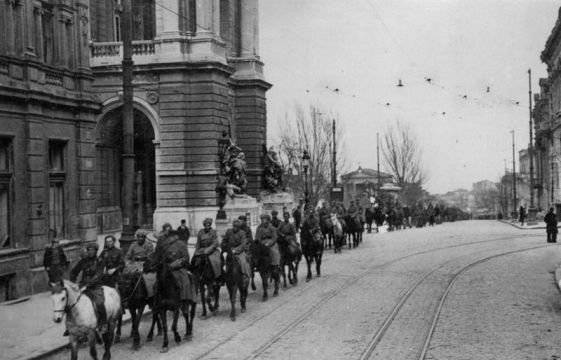
Meanwhile, on April 7, parts of the Pliev group reached the Dniester. Army Group "A" was practically surrounded. At the disposal of the command of the group there was only one way to retreat: the road to Ovidiopol. But its capacity was not enough to take out a huge number of troops and military equipment from the city!
7 and 8 April, the Germans made desperate attempts to break through in the direction of Separate and Tiraspol, but were repulsed with heavy losses.
Alas, Pliev’s fighters failed to intercept the road to Ovidiopol: they simply didn’t have enough strength for that. 10 of the Cossack Guards Division managed to take over the city on April 9, but soon they were forced to leave Ovidiopol under the onslaught of the enemy, who was struggling from Odessa to the west.
However, this situation had its advantages. The Soviet army was actually spared the need to carry out a heavy assault on the city, since the Germans did not think about how to keep him, but how to get out of it. On the night of April with 9 on 10, Soviet troops occupied their initial positions for the assault on Odessa. From the north, the advanced units of the 8 Guards Army under the command of Colonel-General Vasily Chuikov entered the city limits. From the direction of Peresyp, where the Germans tried to organize a fortified line of defense, the 5 shock army of Colonel-General Vyacheslav Tsvetaeva approached. And the fighters of Pliev's group were to enter the city from the direction of the Big Fountain.
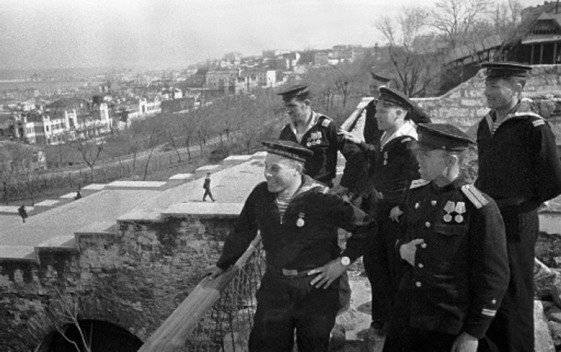
On the night of April 9, partisans were particularly active against the German units bursting out of the city. The German general and author of The History of the Second World War, Kurt Tippelskirch, writes about the 10 thousands of partisans and underground fighters who were active in the city at that time. This figure is likely to be somewhat exaggerated. Anyway, according to German estimates, on the night from 9 to 10 in April, German and Romanian troops in Odessa lost about 500 people from partisan attacks. More importantly, the partisans managed to prevent the destruction of a number of important objects in the city, including the building of the opera house.
The storming of the city itself, which began at dawn on 10 April, was lightning fast: as early as 10-11 in the morning, Soviet troops were on Deribasovskaya.
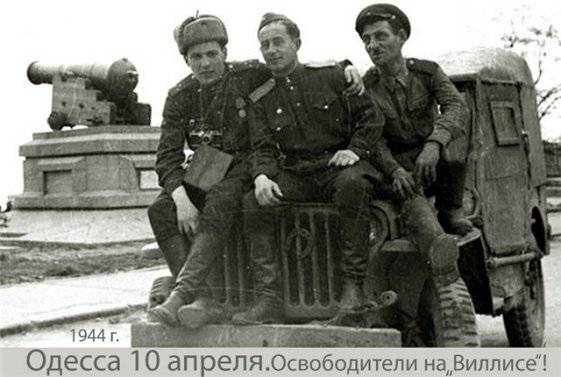
As a result of the Odessa operation, the German Army Group “A” was virtually destroyed - at the end of the operation it was renamed the Army “South Ukraine” group. Although this name no longer corresponded to reality: in fact, army group forces were pushed across the Dniester, and the Soviet troops managed to seize bridgeheads on the west bank of the river in several places, thus creating conditions for further offensive actions.
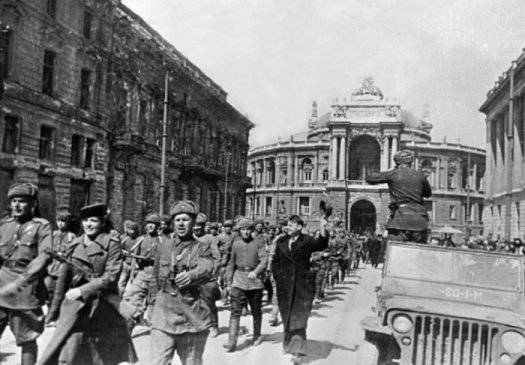
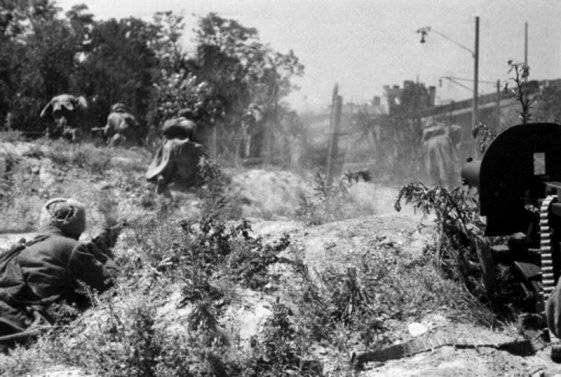
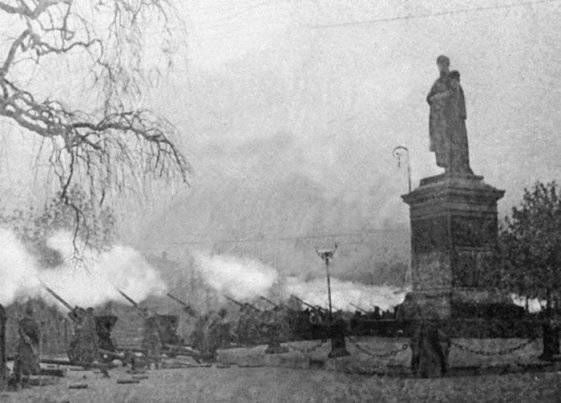
Information